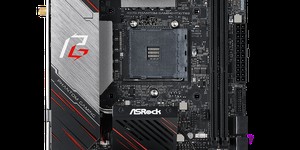
Intel has announced it is redoubling its efforts to make its Thunderbolt peripheral connection technology happen, offering manufacturers cost-free licences to integrate Thunderbolt 3 into their products while pledging to do the same in its next-generation processors.
Developed in partnership with Apple, Thunderbolt was originally unveiled as an optical interconnection under the Light Peak brand before an electrical version hit the market in 2011 under its current name. Designed to compete with the ubiquitous USB standard, Thunderbolt is built to reduce the number of cables you need to run a modern PC: The original Thunderbolt standard supported both PCI Express and DisplayPort connectivity over a single cable, while the latest Thunderbolt 3 implementation of the standard includes PCI Express, DisplayPort 1.2, HDMI 2.0, USB 3.1, and USB Power Delivery over a USB Type-C connector with a peak data transmission rate of 40Gb/s.
Despite packing a considerable number of features into a single USB Type-C port - complete with support for standard USB devices, something the original Thunderbolt standard lacked - uptake of Thunderbolt 3 outside Intel and Apple's own products has been slow. Intel is now looking to change that by removing the requirement to pay a licensing fee and royalties on Thunderbolt 3, making it free for manufacturers to integrate into their products - beyond the cost of the hardware to do so, of course.
'Next year Intel plans to make the Thunderbolt protocol specification available to the industry under a non-exclusive, royalty-free licence,' explained Intel's Chris Walker in a blog post announcing the change to the standard's licensing requirements. 'Releasing the Thunderbolt protocol specification in this manner is expected to greatly increase Thunderbolt adoption by encouraging third-party chip makers to build Thunderbolt-compatible chips. We expect industry chip development to accelerate a wide range of new devices and user experiences.'
At the same time, Walker pledged that Intel would be integrating Thunderbolt 3 technology into its future processors as a means of removing the need for the current dedicated Thunderbolt 3 controller module. 'With Thunderbolt 3 integrated into the CPU, computer makers can build thinner and lighter systems with only Thunderbolt 3 ports,' Walker explained. 'For the first time, all the ports on a computer can be the same – any port can charge the system and connect to Thunderbolt devices, every display and billions of USB devices. Designs based on Intel’s integrated Thunderbolt 3 solution require less board space and reduce power by removing the discrete component needed for existing systems with Thunderbolt 3.'
The new free-as-in-beer Thunderbolt 3 licensing scheme is due to go live next year, Intel has confirmed, though the company has not yet detailed when the first processors with integrated Thunderbolt 3 support will hit the market.
Developed in partnership with Apple, Thunderbolt was originally unveiled as an optical interconnection under the Light Peak brand before an electrical version hit the market in 2011 under its current name. Designed to compete with the ubiquitous USB standard, Thunderbolt is built to reduce the number of cables you need to run a modern PC: The original Thunderbolt standard supported both PCI Express and DisplayPort connectivity over a single cable, while the latest Thunderbolt 3 implementation of the standard includes PCI Express, DisplayPort 1.2, HDMI 2.0, USB 3.1, and USB Power Delivery over a USB Type-C connector with a peak data transmission rate of 40Gb/s.
Despite packing a considerable number of features into a single USB Type-C port - complete with support for standard USB devices, something the original Thunderbolt standard lacked - uptake of Thunderbolt 3 outside Intel and Apple's own products has been slow. Intel is now looking to change that by removing the requirement to pay a licensing fee and royalties on Thunderbolt 3, making it free for manufacturers to integrate into their products - beyond the cost of the hardware to do so, of course.
'Next year Intel plans to make the Thunderbolt protocol specification available to the industry under a non-exclusive, royalty-free licence,' explained Intel's Chris Walker in a blog post announcing the change to the standard's licensing requirements. 'Releasing the Thunderbolt protocol specification in this manner is expected to greatly increase Thunderbolt adoption by encouraging third-party chip makers to build Thunderbolt-compatible chips. We expect industry chip development to accelerate a wide range of new devices and user experiences.'
At the same time, Walker pledged that Intel would be integrating Thunderbolt 3 technology into its future processors as a means of removing the need for the current dedicated Thunderbolt 3 controller module. 'With Thunderbolt 3 integrated into the CPU, computer makers can build thinner and lighter systems with only Thunderbolt 3 ports,' Walker explained. 'For the first time, all the ports on a computer can be the same – any port can charge the system and connect to Thunderbolt devices, every display and billions of USB devices. Designs based on Intel’s integrated Thunderbolt 3 solution require less board space and reduce power by removing the discrete component needed for existing systems with Thunderbolt 3.'
The new free-as-in-beer Thunderbolt 3 licensing scheme is due to go live next year, Intel has confirmed, though the company has not yet detailed when the first processors with integrated Thunderbolt 3 support will hit the market.

MSI MPG Velox 100R Chassis Review
October 14 2021 | 15:04









Want to comment? Please log in.